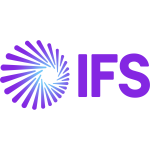The solution's use cases depend on the market in which clients use it. I usually work with manufacturing companies. They used the tool for manufacturing, using whatever they needed to implement SAP independently. Warehousing users use the solution to manage inventory. Both retail and manufacturing markets use warehousing, and that's another big area where the tool is used.
The main focus of moving from an old ERP to the solution is that the HANA database runs in memory and quickly answers questions. Since it's already in memory, reports need not be created after the data is loaded in the transactional tables.
The solution's most valuable feature is integration. You're still talking about modules, procurement, and business partners. All of these are different modules in SAP S/4HANA. Everything is connected easily because of the integration of the same database in the memory. It's already connected there. You don't need to change the view.
You can change the view from one perspective to another, but it's mostly the same thing. You are not jumping between modules in such a way that you are seeing the same data differently. Since you see the same database, you are not making mistakes when seeing the customer in procurement or inventory. You see exactly the same data because it comes from the same view.
Everything is integrated in that way. There are no more mistakes in the data not being updated. Every time you access something, it is already updated in real-time. From a business point of view, you see the same figure no matter how you access it.
SAP S/4HANA is an expensive solution.
I have been using SAP S/4HANA for 10 to 12 years.
If there are no customizations, SAP S/4HANA is a very stable product.
You can add more transactions, materials, customers, and vendors. Scaling the solution is not a problem because you are in a private cloud. You need more servers, but the system is prepared to work that way. The solution is more suited for medium to enterprise businesses. Some small customers want to have this kind of ERP, but the problem is that it is expensive.
Without any changes, the solution's initial setup is easy. The process is very, very easy to implement. If there are changes, we need to recommend that SAP incorporate those modifications because they may be standard.
That is a long shot because SAP filters everything, as there are many customer requests. They filter them and implement only the ones they think are useful to everybody. Those modifications are taken into account for the next release. It's a problem for the customer if they need something that is not standard for SAP S/4HANA. If it is a standard for SAP S/4HANA, it's easy to implement.
I rate the solution’s initial setup ten out of ten.
Some customers needing this kind of software don't consider the costs. They think about the profitability they can achieve with the solution's implementation. People concerned about the costs need to evaluate whether implementing this system is profitable.
It depends on the perspective. You need to consider whether this investment is enough to get you to what you are looking for. It's basically a market evaluation of what you are doing.
With the solution's real-time analytic options, you don't need to use anything else. You already have the data in memory, and you can build any query to extract something that was hard to extract earlier.
The business process works fine because there are not too many steps now. Since everything is in memory, the processes are simpler than before. The business processes are cleaner because you don't need to go through too many steps to get the results done. You now have a 360-degree view of a customer.
Whether you are accessing the customer by invoicing or by a business partner, you get the view of these customers all around, and you don't need to jump between modules. Everything is now more easily integrated.
The first approach was to have this ERP implemented on-premises. Now, the solution is going to the cloud. The idea is to deploy the tool depending on the requirements of the customer or the client. The products are already built, and you don't need to do anything else.
You are accessing the solution in a way that is already customized for the customer. You don't need to do anything additionally. The ERP is already ready to be used. Then, you have hybrid implementations, partly in the cloud and partly on-premises.
Also, you can have everything on-premises but in a private network. So, it depends on the client's requirements. Everything can be done depending on the client's requirements, but the solution can be deployed everywhere.
Customers are currently looking to migrate from ECC into S/4HANA. The improvements or benefits will come from implementing S/4HANA. These customers are not so worried about how it is going to work because they want to do the initial migration. A lot of customers are doing that at this time, and it is a potential market for us as implementers on which we can rely for a long time.
SAP provides a module that facilitates migration from any system, not only ECC, to SAP S/4HANA. The idea here is to provide layouts already built. The customer or client only needs to populate this layout and then push it into the solution, which is easy. However, depending on the client, some things may not completely reflect what the customer or client needs. So, they need to do customizations.
Those customizations need to be done before in SAP S/4HANA, and then this special module for data migration needs to be modified. It could be totally different from what the standard SAP is doing. So, they need to do other programming to get this data loaded into specific modules being modified for that client.
The idea is to get the benefit of what SAP S/4HANA is offering. The idea is not to customize anything. However, we always have something that is not specific for a client and needs to be modified. The module itself is capable of modifying what is required. If you modify the tool too much, the next version will not be implemented quickly.
That's why the recommendation is not to modify anything. The processes already built into the solution are enough for any kind of market. However, if you are doing it, you need to comply with what SAP recommends. If the new version is coming, you can implement it quickly, or you will have issues like in the past. Heavily customized ERP systems are complex to migrate to the new versions.
Overall, I rate the solution a nine out of ten.
















